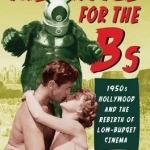The Battle for the BS: 1950s Hollywood and the Rebirth of Low-Budget Cinema
BookThis item doesn’t have any media yet
2012 | Film & TV
The emergence of the double-bill in the 1930s created a divide between A-pictures and B-pictures as theatres typically screened packages featuring one of each. With the former considered more prestigious because of their larger budgets and more popular actors, the lower-budgeted Bs served largely as a support mechanism to A-films of the major studios--most of which also owned the theatre chains in which movies were shown. When a 1948 U.S. Supreme Court antitrust ruling severed ownership of theatres from the studios, the B-movie soon became a different entity. In The Battle for the Bs , Blair Davis analyses how B-films were produced, distributed, and exhibited in the 1950s and demonstrates the possibilities that existed for low-budget filmmaking. Made by newly formed independent companies, 1950s B-movies took advantage of changing demographic patterns to fashion innovative marketing approaches. They established such genre cycles as science fiction and teen-oriented films (think Destination Moon and I Was a Teenage Werewolf ) well before the major studios and also contributed to the emergence of the movement now known as underground cinema.
Although frequently proving to be multimillion-dollar box-office draws by the end of the decade, the Bs existed in opposition to the cinematic mainstream in the 1950s and created a legacy that was passed on to independent filmmakers in the decades to come.
Related Items:
| Published by | Rutgers University Press |
| Edition | Unknown |
| ISBN | 9780813552538 |
| Language | N/A |
Images And Data Courtesy Of: Rutgers University Press.
This content (including text, images, videos and other media) is published and used in accordance
with Fair Use.
| 9-10 |
|
0.0% (0) | |
| 7-8 |
|
100.0% (1) | |
| 5-6 |
|
0.0% (0) | |
| 3-4 |
|
0.0% (0) | |
| 1-2 |
|
0.0% (0) |
